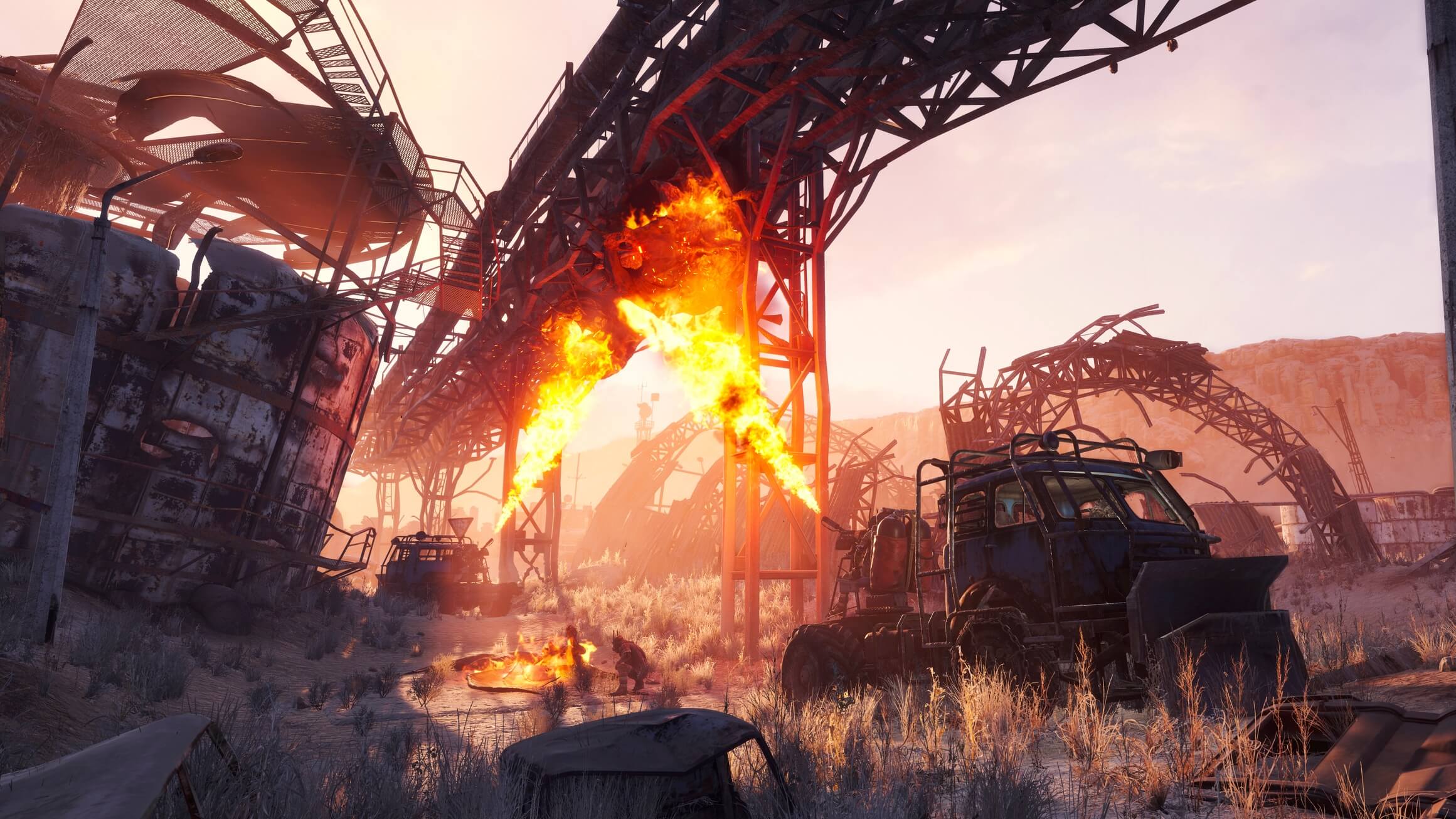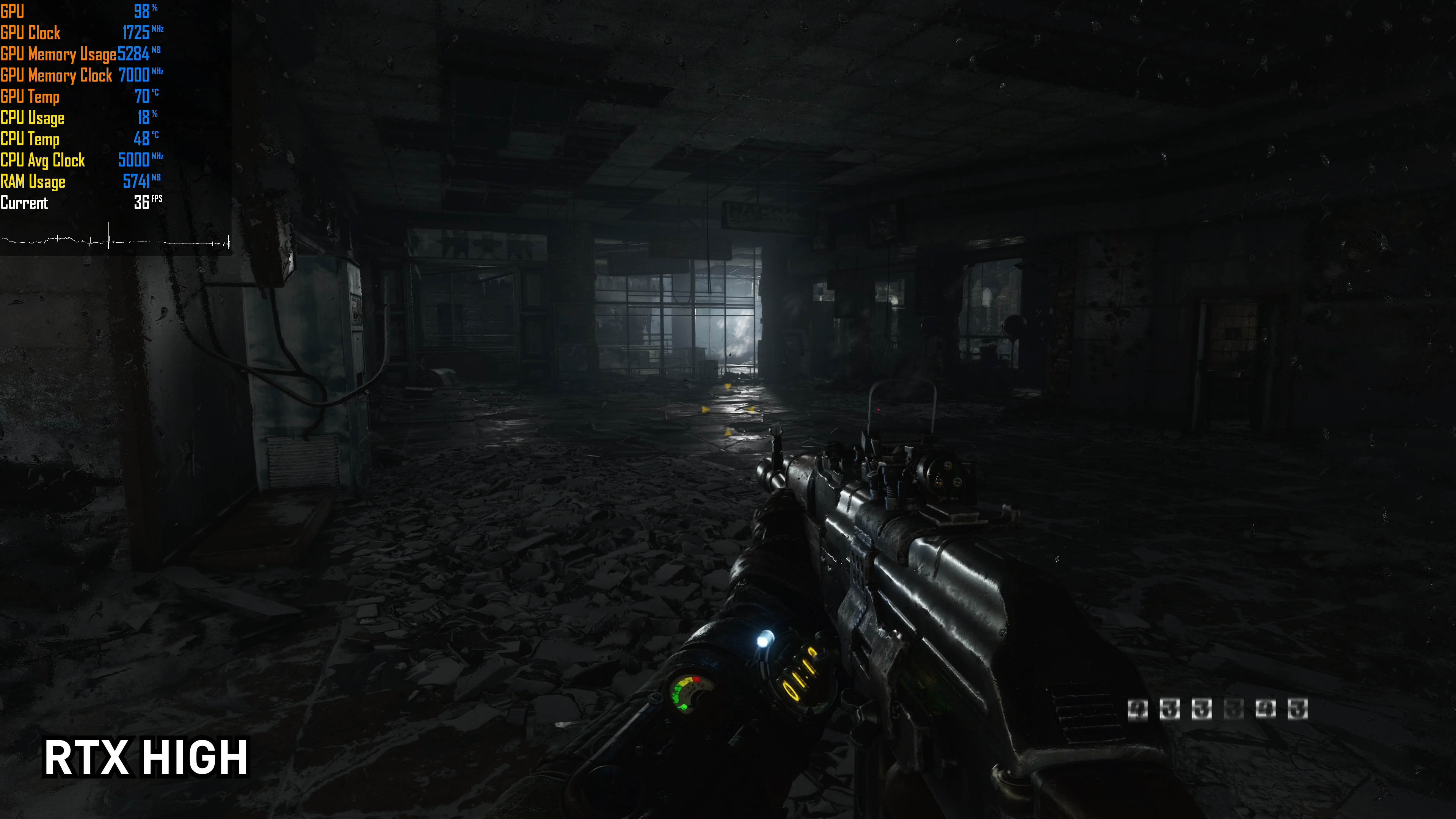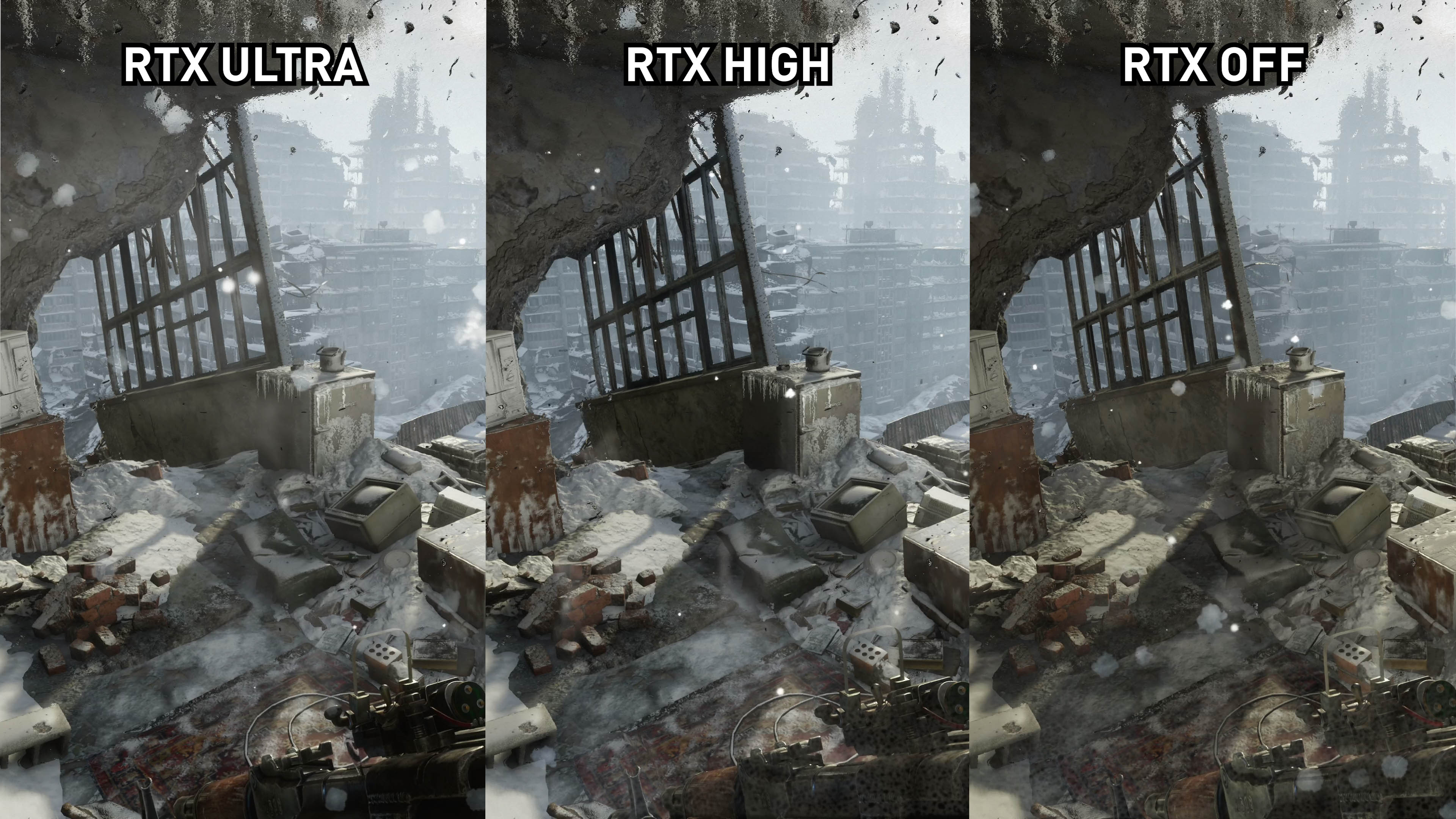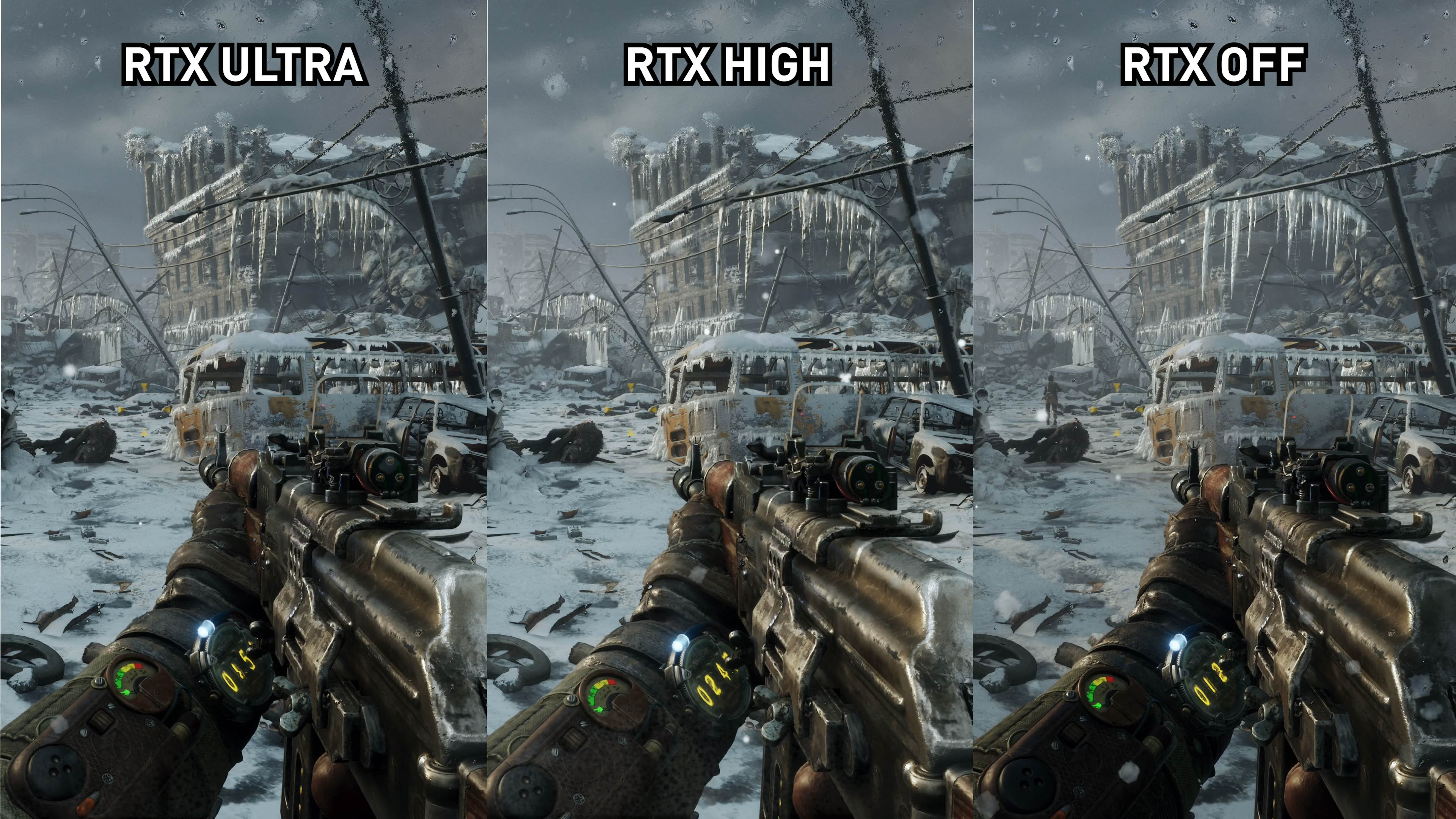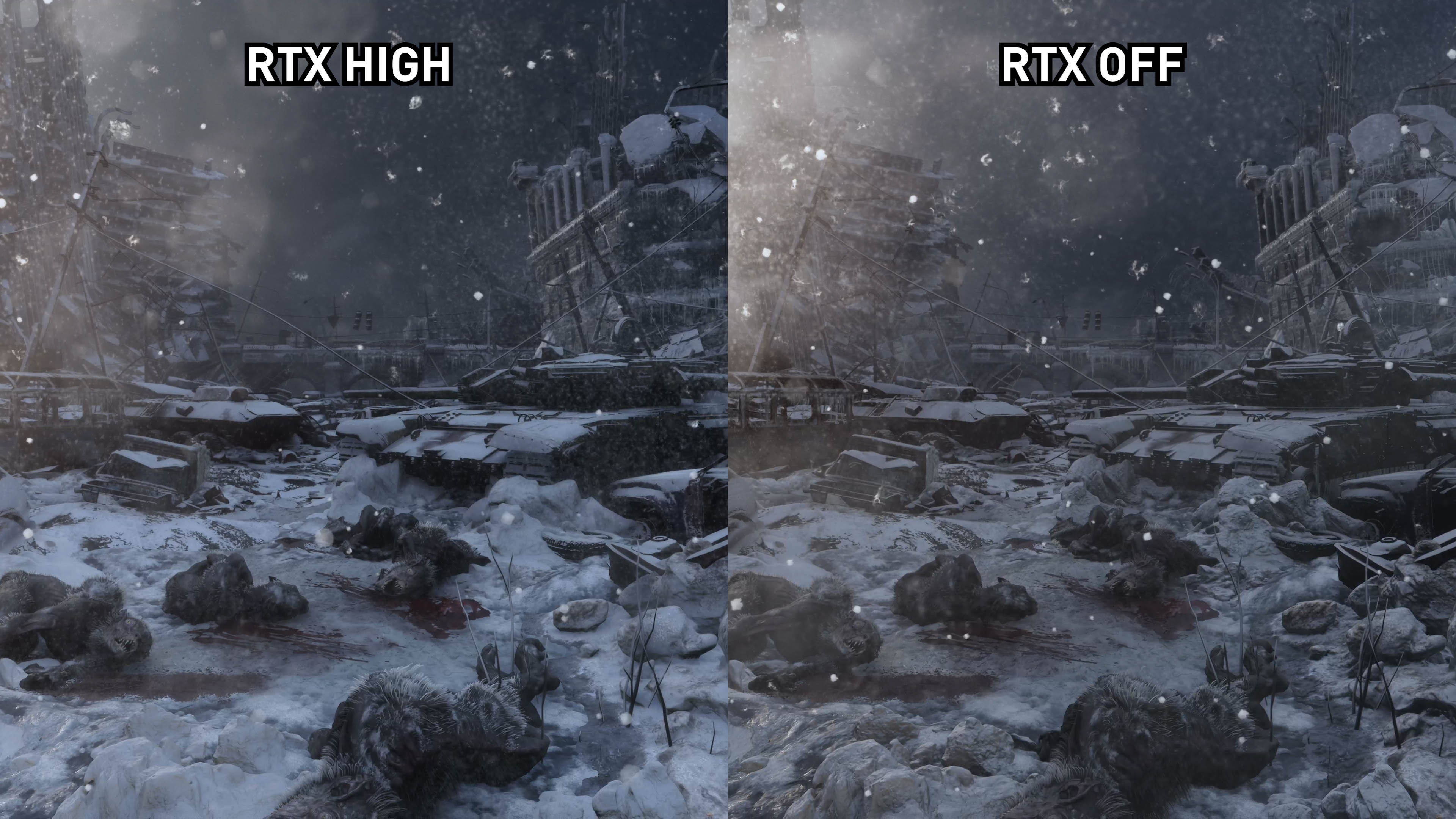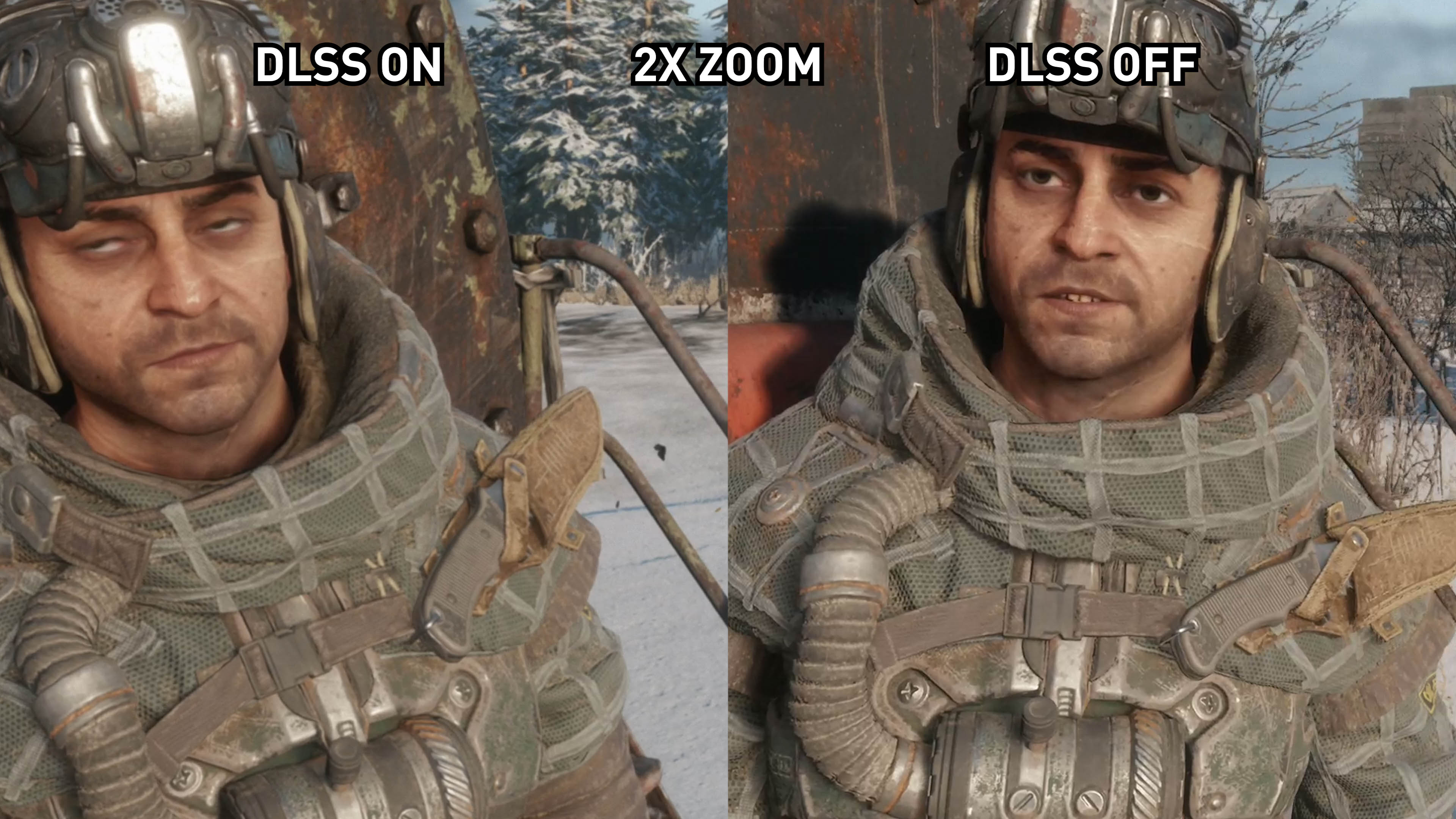It's time for us to talk about ray tracing once again, this time in Metro Exodus, the latest game to integrate support for Nvidia's RTX technology. Last time we checked out ray tracing in Battlefield V we were a bit disappointed with the implementation, the use of ray-traced reflections didn't add a whole lot visually, there were issues with noise, and the performance hit was pretty severe. Considering the game is a reasonably fast paced competitive shooter, ray tracing in that game just isn't worth the penalty.
But things are pretty different when it comes to Metro Exodus. This isn't a competitive online shooter, instead it's a slower paced, open-world single-player survival shooter. Ray tracing is implemented as global illumination, not reflections. And the game is launching with optimized ray tracing and DLSS from day one.
In this article we'll be looking at both the quality differences between RTX on and off for this title, as well as the performance hit across all four Nvidia GeForce RTX graphics cards at a range of resolutions. We'll spend a brief bit of time talking about how DLSS can be added to the mix, so you'll get our usual comprehensive coverage of RTX in this game today.
So what is global illumination? To answer that, We'll start by talking about how lighting works without global illumination, as is the case in many games. Without GI, you're left with direct illumination, so if there's a light source, anything that falls in the path of that source's lighting will be illuminated and will cast shadows. But this kind of lighting is limited, it lacks realism and depth, it does not include indirect illumination.
In real life, light doesn't just emit from surfaces, hit something then disappear. Instead, light reflects off surfaces onto other surfaces. This is what global illumination provides. With this lighting system enabled, light bounces off surfaces creating greater depth, and if light interacts with colored surfaces along the way, this can lead to colored reflections. Caustic effects are also possible, so overall the lighting system becomes better and more realistic.
Global illumination is also not new to ray tracing, it's something that has been possible previously with rasterization techniques. However, ray tracing allows the effect to be more accurate, more realistic and more comprehensive across a given scene.
In Metro Exodus, ray traced global illumination is available in two modes: High and Ultra. There's no low mode here, it's straight to High for the base implementation and then Ultra we believe adds further reflection steps to the computed GI path. You need DirectX 12 to be enabled to gain access to ray tracing, but this isn't a big deal because our initial testing indicates there's no performance difference between DX11 and DX12 in this title. You can also enable and disable ray tracing at any time without restarting the game.
In terms of the visual difference, ray traced global illumination can be subtle or it can be very obvious. It all depends on the scene and what you're looking for. However, in general the improvements ray tracing makes to Metro Exodus are far greater than the improvements DXR reflections bring to Battlefield V.
In this scene you can immediately see the differences between RTX on and RTX off. The scene has more depth and realism to the lighting system. It may not be obvious at first, but with global illumination disabled, some areas of the scene are illuminated where they shouldn't be.
For example, with RTX off the boxes under the desk are illuminated by a non-existent light source. With RTX on, these areas are correctly presented in shadow. It's a similar situation with the back of the lamp on the desk and the ceiling light, realistically very little light should be hitting these areas and with global illumination enabled, that's what you're getting.
It's a similar situation in this scene. With RTX off, it looks a bit weird having the bright wall and the dark pipes with the lighting present here. You might not have ever noticed an issue until you turned on RTX, where the lighting is better interacting with these two elements. It's darker, yes, but it's more realistic and adds to the atmosphere.
The effect is more subtle in this scene, but again areas that shouldn't be illuminated, aren't illuminated. How visible the changes are all depends on the lighting, the objects in it, the angle you're viewing and so on. This is one of the scenes where you won't see as drastic of a change.
But when you step into the above ground areas of the game, particularly during the day, RTX has some of the biggest changes I've spotted. Here it almost has the opposite effect of the darker underground sections. Rather than removing light from surfaces that shouldn't have it, global illumination outdoors tends to add light to where it should be. This scene has lots of points of reflection, including the snow and several walls behind the camera. So again it makes sense that it's brighter, with less shadowed areas and better surface interactions.
Another interesting note to make about this scene is the tone. The RTX off environment has a slight yellow tone due to the color of the sun. But with RTX off, it's whiter, thanks to the light reflecting off white walls and snow. That's one of the other advantages to global illumination.
This is another scene where there is a significant difference between RTX on and off. RTX off feels like it has a general ambient light from a non-existent source. Whereas the RTX on footage sees its light come solely from the windows and overhead lights, which creates a darker though more natural presentation.
Look at the soldiers on the right in particular, with RTX on they are more illuminated than the two central characters, as they're standing directly under a light whereas the center characters are not. When you turn RTX off, the scene is lit more evenly - the central characters are roughly as bright as the soldiers on the right - which doesn't make sense given the position of the light sources.
Most of the other scenes we captured just continue to show off the aspects we've already mentioned. Throughout most of the game, these are fairly significant and visually obvious changes to the lighting system. From what we've seen the lighting appears more realistic based on where light sources are placed, adding greater depth and a more 'natural' look to the game.
But it's also not a definitive case of RTX on being better. With reflections, aside from the noise issues, it was clear that ray traced reflections were superior to screen space reflections from a visual standpoint. With ray traced global illumination, while we feel the lighting is more realistic and has more depth, it's more of an artistic change. Some people may like the RTX off presentation more, if they prefer brighter scenes in darker areas, and more shadowing in bright outdoor lighting.
There are a few more points we want to make on the visuals before diving into performance.
We found it very difficult to spot any changes between the High and Ultra modes. Sometimes we thought there was a small difference, only to discover the differences were down to the game's dynamic, slightly changing lighting system, rather than the jump from High to Ultra RTX. So without looking at performance it's pretty safe to say that High is the way to go.
There is no noise present anywhere with ray traced global illumination. This was a big issue with reflections, but it's not visible in Metro Exodus. That's clearly a fantastic thing, because in some scenes the noise in Battlefield V's ray traced reflections was very noticeable and could look worse than with ray tracing disabled. In Metro, it's a non-issue.
It's also important to note that the game doesn't feel like something is missing from the lighting system when RTX is disabled. It's not a situation where the developers have removed an effect from the non-RTX version of the game, only to bring it back through ray tracing. The game still looks phenomenal with RTX off, it just - at least in our opinion - looks even better and more accurate with RTX on.
Then there's the question, could the developers of Metro Exodus, have achieved the same global illumination effect without ray tracing? There's no switch to simply enable a non-ray traced global illumination to make a nice comparison, so this is tricky to answer. We haven't looked extensively into its implementation in other games, but our feel is that Metro Exodus' RTX-based GI is more accurate and more comprehensive. It definitely looks pretty good here, probably the most accurate lighting we've seen.
Also, global illumination through other techniques already tends to be a fairly computationally intensive effect to add in to games. Turning ray tracing on does come with a sizable performance hit as we'll see in a moment, however this has tended to be the case with other games that use GI as well. The RTX penalty is most likely larger, however it's also a better implementation, so we're not as concerned with this being a pointless re-engineering of global illumination as we were with reflections. If you remember, we saw reflections done really well without ray tracing at a much lower performance cost in Hitman 2. Examples of global illumination done as well as Metro Exodus with a much lower performance cost, that's a lot rarer. And there's a chance that using ray tracing is easier for developers than other techniques, which means better visuals from fewer resources.
Performance
Moving into performance, we've tested all the RTX GPUs using an Intel Core i9-9900K, although the exact CPU doesn't matter much here because the game is very GPU demanding. Latest drivers were used, so that's Nvidia's 418.91, the day one drivers for Metro Exodus. I also tested with both the pre-release and day-one version of the game and found no difference in performance.
The performance data was gathered using Metro Exodus' built in benchmark tool. This helped to simplify the testing process and make it highly repeatable, but I want to put a big warning sign somewhere here because there's very important things to note about Metro's benchmark tool.
We've played a few hours of the game as well, and so far the benchmark tool represents performance in the most intensive areas of the game. In fact, if anything, the benchmark is more intensive than the game itself. Throughout most of the game, you can expect overall performance to be better than the benchmark tool shows, however in those really intense areas, the benchmark is a reasonable reflection of in-game performance.
We feel the benchmark does a better job of showing performance with RTX on, while underrepresenting RTX off performance somewhat. We'll elaborate on this after the charts but the margins between RTX on and off in the benchmark are usually slightly smaller than the margins you'll see in the game itself.
All other settings were set to Ultra in the benchmark, the only setting we changed was ray tracing. There is also an Extreme preset above Ultra, but we felt Ultra was a better balance. Several settings are not encompassed in the preset and these are all enabled, with motion blur set to normal, Tessellation on Full, and both PhysX and Hairworks enabled. DLSS was disabled.

Starting with 1080p, immediately from the RTX off numbers you can see the game is very intensive in its worst case scenarios. We'll go into more detail on this when we follow-up with our full Metro Exodus GPU benchmark in the coming days, but you will get a preview of the results here.
An RTX 2070 is required for a 60 FPS average in the benchmark at just 1080p, while the most intensive parts of the tool see that performance dip to near 30 FPS. Ouch. But again, throughout most of the game we've played you'll see performance higher than this. A good example is the RTX 2080 Ti, which averages 90 FPS here, but for many sections of the game this is up more around 120 FPS, aside from some intense scenes.
The good news is enabled ray traced global illumination doesn't tank performance to anywhere near the degree of ray traced reflections in Battlefield V. Looking at the RTX High results, we only saw a 17% increase in performance from disabling RTX at 1080p for the RTX 2080 Ti. This grows slightly to 21% for both the RTX 2080 and RTX 2070, and 24% for the RTX 2060. And the margins are smaller again when looking at 1% lows, so it's clear that in the very most intensive areas of Metro Exodus, it's not ray tracing that is causing that extra performance drop.
The Ultra setting is more intensive again. There's around a 10 percent gap between the two modes, so for the RTX 2080 Ti, turning ray tracing down from Ultra to Off sees a 26% performance improvement, rather than 17% for High. Considering there's almost no visual change between High and Ultra we don't see why you'd use Ultra here.
With Battlefield V, the performance you gained from turning DXR reflections from just the Low mode to Off hovered between 50 and 60 percent for most GPUs at 1080p. With Metro Exodus, going from High to Off is closer to 20%.
However with the RTX 2060 hovering around 41 FPS on average with Ultra settings at 1080p and using the High RTX mode, we feel that ray tracing still isn't well suited to Nvidia's lowest-level card capable of ray tracing. Again, it's a worst case scenario, but that level of performance is quite low especially with 1% lows below 30 FPS.

At 1440p, the margins do grow a bit compared to 1080p. Here, the RTX 2080 Ti sees a 25% uplift switching from High to Off. That margin is up around 28% for the 2070 and 2080, while the 2060 sees a 36% performance gain. The RTX 2060 does not perform well at 1440p with ray tracing, so it's not something I'd recommend. Even the RTX 2070 is borderline in the benchmark. Meanwhile the RTX 2080 and RTX 2080 Ti are at acceptable levels of performance.

Moving to 4K, and this is a resolution that simply wasn't worth using with ray tracing in Battlefield V. With Metro Exodus it's borderline. The RTX 2080 Ti sees a 38% uplift in performance at this resolution with RTX disabled, so much higher than 1440p and 1080p. This shows once again that ray tracing doesn't scale nicely with resolution; the performance impact is higher with each resolution jump, especially when going all the way to 4K. The 2080 and 2070 get hit harder again, but both cards aren't great for 4K gaming in this title to begin with, especially the 2070.
The RTX 2080 Ti is the only GPU we'd consider using for High ray tracing in this game at 4K, and even then I feel the performance impact is probably too large for most gamers. Going from a 47 FPS average, which isn't amazing but playable for this sort of game, to a mid 30s frame rate is not great. With that said, you'll get better framerates with RTX on at 1440p, than you will with RTX off at 4K, so again unlike with Battlefield V there's not the same level of trade-off between resolution and ray tracing.
As we mentioned earlier, the benchmark is a bit of a worst case scenario for performance in general, but it's also typically a best case scenario for the margin between RTX on and RTX off.
It's a bit weird in that regard. We've played the opening few sequences of the game twice, with both RTX on and RTX off, and the margins between the two playthroughs at 4K were sort of 35% on the low end, but as high as 60% or more in some areas. It can vary a bit between scenes and levels, so it's hard to nail down an exact figure that's representative of the game. However the benchmark delivered a 38% margin, which typically was on the 'better' end for the performance impact.
With that said, typical in-game margins looked more reasonable at 1440p and 1080p, where the benchmark showed a 17 to 25 percent gain from disabling ray tracing, whereas in the game itself, up to a 30% gap is what you can expect. In the worst cases for ray tracing, aside from playing at 4K you won't see 50% margins which was a key issue with Battlefield V's reflections.
Will DLSS improve upon these performance numbers? Yes and no.
Yes in the sense that enabling DLSS with RTX on takes performance back up to around the level of RTX off. In fact, RTX on the High mode plus DLSS was around 8% faster at 4K than RTX off, although performance was 12% lower than just running the game at 1440p with RTX on. DLSS at 1440p with RTX on was a little slower than RTX off.
But it's also not an improvement because the visual quality is not equivalent. The 4K DLSS presentation is noticeably softer and blurrier than native 4K. If I'm playing at 4K I want the native, sharp image which is especially nice in Metro Exodus.
The big question is, should you turn on RTX? And the answer is... it depends. It's not a universal recommendation, but it is an improvement from where things were at with RTX in Battlefield V. With DXR reflections we could not recommend anyone use the feature, and it didn't do a good job of selling the benefits of ray tracing. But with Metro Exodus there are some cases where it makes sense to turn RTX on.
One of the key differences is the game itself. Metro is a slower, single player game. Yeah, you still want good performance, but part of this game's experience is in the breathtaking visuals. There's not as much to gain from playing Metro Exodus at above 100 FPS, compared to a competitive multiplayer shooter like Battlefield.
Then there are two additional factors that make this implementation better than Battlefield V. First, the visual change is larger – it may not be subjectively better for every person, your opinion on how it looks may vary even depending on the scene – but we found the differences to be more noticeable throughout the game on the whole. With reflections, it was only some areas where you can spot the effects of ray tracing, and in some instances it was horribly noisy. But with ray traced global illumination, almost every environment in the game is lit differently, and in our opinion more accurately. To us, RTX on looked better most of the time, sometimes substantially so.
Then there's the performance hit. It's not as bad as DXR reflections either. The hit is there, especially at 4K, but it doesn't feel like we're in crazy territory anymore. A 20 to 30% improvement from disabling the effect remains one of the larger hits for any individual graphics effect, but it's not 50 to 60%. It's also in line with some of the larger performance hits we've seen from non-RTX effects in games over the last few years.
When you combine all of these factors, RTX global illumination in Metro Exodus is looking a lot more favorable. It's a game that benefits from stunning visuals, RTX on looks better a lot of the time, and the performance hit is manageable. This is how RTX should have launched to the public; if this is what gamers got the first time they saw ray tracing, we think people's impressions would have been a lot more positive.
But again, it does depend on your situation as to whether RTX is a feature worth enabling in the game. At 4K, the higher than usual performance hit makes RTX not worth it (or reasonable given the performance hit), even with an RTX 2080 Ti. You're only going to get a 60 FPS experience with RTX off at 4K with Nvidia's flagship GPU, cutting into that performance significantly is not a choice we'd make.
We would also tend to err on the side of not using RTX for any configuration where you're not already hitting 60 FPS or thereabouts, especially if you don't have an adaptive sync monitor. So this would include the RTX 2060 at 1080p, or the RTX 2070 at 1440p. We feel the experience with RTX off at 60 FPS, is better than RTX on at maybe 45 to 50 FPS or so, in both instances.
But when you have headroom to spare, and you're a gamer that loves improved visuals, then yes, there is something to be gained from playing with RTX enabled. One example would be the RTX 2080 at 1440p. From what we've experienced, that GPU runs Metro comfortably above 60 FPS at that resolution aside from the very most intensive situations. You turn on ray tracing and the game is still a 60 FPS experience, with improved visuals. If you love graphics, we don't see how that's a bad thing when you're still achieving strong performance in this title.
The day will come that using RTX can be recommended in all situations. The tech looks more promising today than we originally thought, but from a first generation GPU and only the second game to include the feature, it still shouldn't be used as a factor in buying a new graphics card. There are still very few games that have announced will support DXR. Those of you that get a good deal on an RTX GPU can enjoy this as a little bonus.
